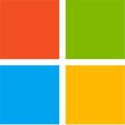
Palit GeForce RTX 4060 Dual Appears on Galaxus Store
Galaxus, a German e-commerce store had a custom NVIDIA GeForce RTX 4060 graphics card available for purchase yesterday—VideoCardz picked up on this embargo busting listing yesterday evening, but the product page has been removed overnight. Fortunately a screenshot of the Palit Dual's premature retail appearance was kept for preservation purposes. The official launch of NVIDIA GeForce RTX 4060 (non-Ti) GPUs is scheduled for June 29, and European MSRP is set at €329 ($359). Galaxus had the custom Palit card priced at €339, so a €10 upcharge could be warranted if the included cooling solution is more robust than NVIDIA's reference design, or the extra expense covers the cost of more RGB lighting zones.
Palit revealed its RTX 4060 Dual and StormX series last month, with both variants being factory overclocked (OC). The (now redacted) Galaxus product page seemed to show a not yet announced Dual (non-OC) model, and a product code "NE64060019P1-1070D." Palit's press release from late May mentions that users can customize the Dual's cooler to some degree: "In light of the positive feedback from GamingPro Maker project, now the support is also enabled on the Palit GeForce RTX 40 Dual Series. Users can download the 3D files of the Dual cover and backplate from Palit website to paint or create add-on elements on it, and simply attach the 3D-printed cover to the shroud." It that unique selling point interesting enough to get prospective budget graphics card buyers to consider Palit's latest offering?
Palit revealed its RTX 4060 Dual and StormX series last month, with both variants being factory overclocked (OC). The (now redacted) Galaxus product page seemed to show a not yet announced Dual (non-OC) model, and a product code "NE64060019P1-1070D." Palit's press release from late May mentions that users can customize the Dual's cooler to some degree: "In light of the positive feedback from GamingPro Maker project, now the support is also enabled on the Palit GeForce RTX 40 Dual Series. Users can download the 3D files of the Dual cover and backplate from Palit website to paint or create add-on elements on it, and simply attach the 3D-printed cover to the shroud." It that unique selling point interesting enough to get prospective budget graphics card buyers to consider Palit's latest offering?





































































